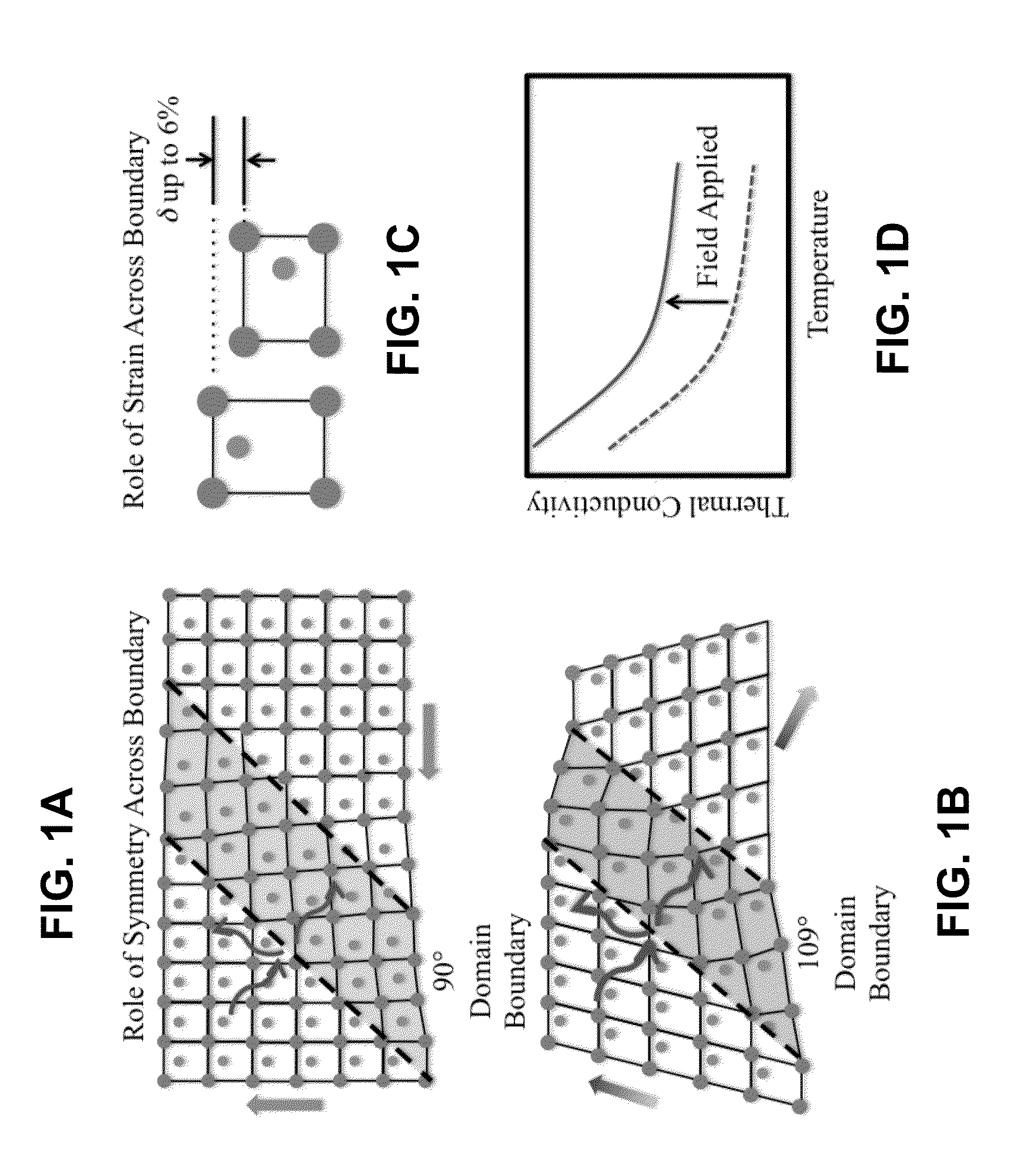Voltage tunability of thermal conductivity in ferroelectric materials
a technology of ferroelectric materials and voltage tunability, which is applied in the direction of conductors, lapping machines, manufacturing tools, etc., can solve the problems and achieve the effect of increasing the scattering of heat-carrying phonons
- Summary
- Abstract
- Description
- Claims
- Application Information
AI Technical Summary
Benefits of technology
Problems solved by technology
Method used
Image
Examples
Embodiment Construction
[0027]The present invention is directed to a method to control thermal energy transport by the use of field-tunable mobile coherent interfaces to scatter phonons in nanoscale ferroelectric films. By reducing material characteristic dimensions to the nanoscale, the density of coherent ferroelastic domain boundaries increases to the concentration and spacing where they can directly impact thermal transport at room temperature and above. Since ferroelastic domain walls in ferroelectrics can be moved and ultimately eliminated through the application of an external electric field, ferroelectric systems enable field-tunable thermal transport behavior. Therefore, thermal conductivity can be actively tuned, simply by applying an electrical potential across the ferroelectric material.
[0028]Principal to the concept of using ferroelastic domain walls to affect thermal transport across coherent interfaces is that these interfaces can alter phonon transport. According to the present invention, t...
PUM
| Property | Measurement | Unit |
|---|---|---|
| temperature | aaaaa | aaaaa |
| temperature | aaaaa | aaaaa |
| thickness | aaaaa | aaaaa |
Abstract
Description
Claims
Application Information
 Login to View More
Login to View More - R&D
- Intellectual Property
- Life Sciences
- Materials
- Tech Scout
- Unparalleled Data Quality
- Higher Quality Content
- 60% Fewer Hallucinations
Browse by: Latest US Patents, China's latest patents, Technical Efficacy Thesaurus, Application Domain, Technology Topic, Popular Technical Reports.
© 2025 PatSnap. All rights reserved.Legal|Privacy policy|Modern Slavery Act Transparency Statement|Sitemap|About US| Contact US: help@patsnap.com



